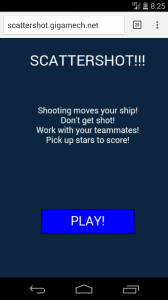http://vimeo.com/104987286
If you’ve ever heard of the phrase “Hate the game, not the player,” our spin was to make it “Hate the player in the game.”
Our idea for subversive play was to transform frustrating multiplayer game experiences into something a little more gratifying. While playing a normal game (Mario Kart), we kept track of all those little negative experiences, creating a point system to quantify our anger. Then, using a simulation game, in this case The Sims, we recreated each other’s in-game avatars, and exacted our revenge on them in various ways for each of negative experiences: we cause them to have involuntary bladder accidents, get into fights, die in a cooking accident, drown, etc.
More information on Mario Kart:
Playing a game like Mario Kart can be frustrating. Thanks to the pseudo-random balancing element of items like red shells, blue shells, and the many comical obstacles, one can go from first place to last place, mere feet from the finish line on the last map. One of my friends even coined the term “nonsense zone”, a devilish area roughly from 4th to 7th place where you can be doing fine one second, and shot back the next. The mechanism is this: you have many players in front and behind you, all relatively close, who can throw bombs, bananas, fake item blocks, red shells, etc. any which way. It’s very easy to get hit, often with little to no time to react; even the best players are susceptible. Once you are hit, you become a sitting duck to be hit by any of the several people behind you again. All of this takes place over the course of a few seconds. In sum, you can be doing fine and then BOOM LAST PLACE.
To the cool-headed rational person, these are just parts of the game that you have to accept. Grit your teeth and bear it, so to speak. But what if you’re not cool-headed and rational? This is what we explore in our project.






